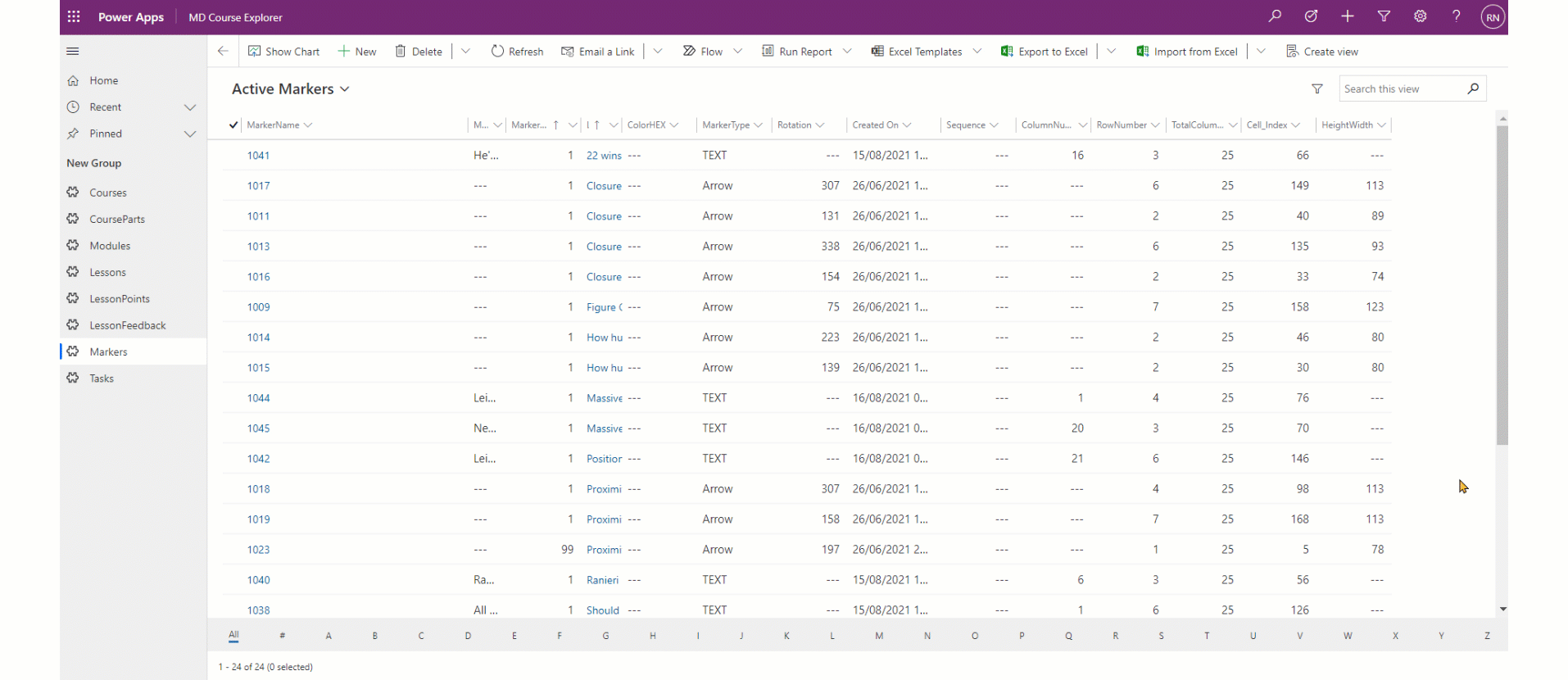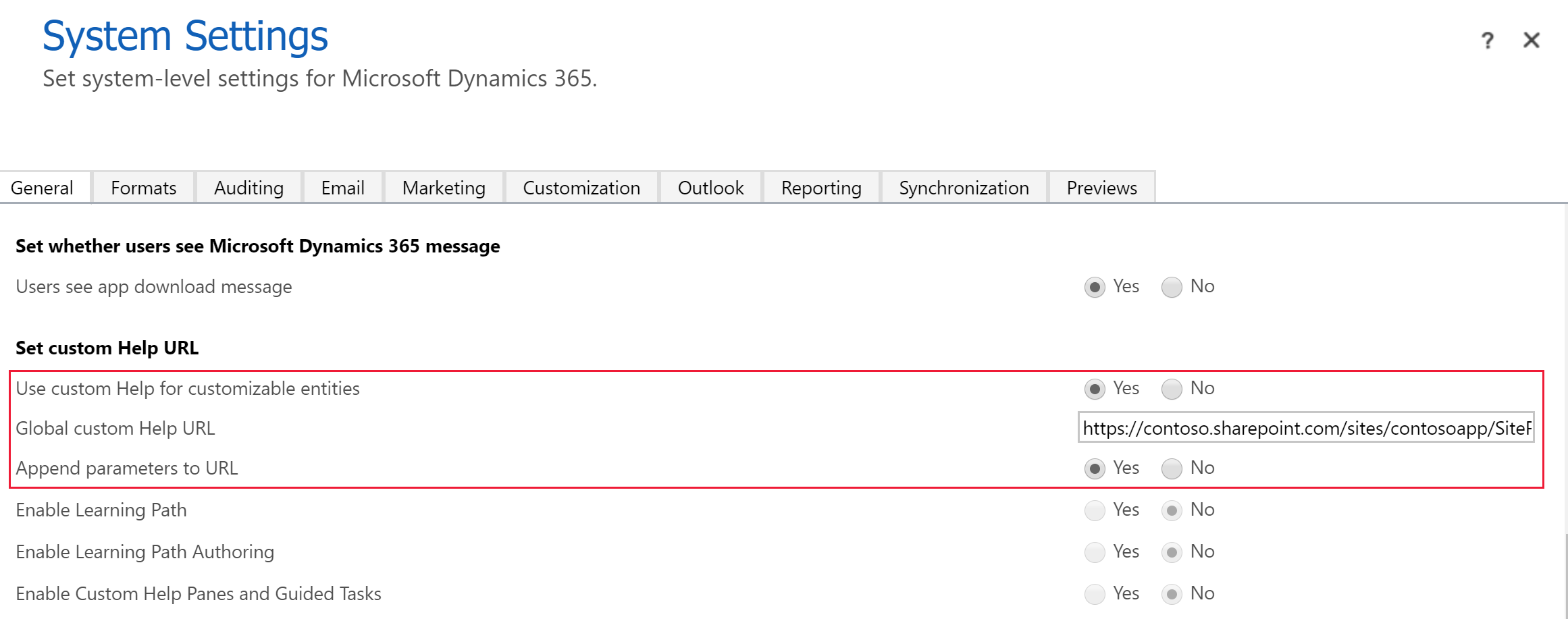Enable and use customizable help
Customizable help lets you provide your own contextual information to model-driven app users filling in forms.
Note
Instead of creating and maintaining your own Help system, custom help panes and guided tasks are available that you can use to author Help that gives your Unified Interface application a custom in-product help experience that is tailored to your organization. More information: Create guided help for your Unified Interface app
With model-driven apps, you can replace the default Help with the custom Help of your choice, at the global (environment) level or table level. Custom Help makes the content exposed through the Help links more relevant for your custom or customizable tables. With a single, global URL you can override the out-of-the-box Help links for all customizable tables. Per-entity URLs override the out-of-the-box Help links on grids and forms for a specific customizable table. You can include additional parameters in the URL, such as language code and table name. These parameters allow a developer to add functionality to redirect the user to a page that’s relevant to their language or the table context within the application. The table level custom Help settings are solution aware, therefore you can package them as a part of a solution and transport them between environments or distribute them in solutions.
Set up customizable Help
Customizable Help can be set at the global and table levels.
Set customizable Help at the global level
People with the system administrator security role can use the settings to override default Help at the global level.
Open a model-driven app, and then on the command bar select Settings
 > Advanced Settings.
> Advanced Settings.Go to Settings > Administration.
Select System Settings, and then select the General tab.

Under Set custom Help URL, select and define the following customizable Help global settings:
- Use custom Help for customizable tables. Select to enable.
- Global custom Help URL. Enter the URL to your custom Help.
- Append Parameters to URL. Select Yes to allow for parameters such as language code or table name to be appended to the Help URL that you specify in the table definition. More information: Append parameters to URL

Select OK.
Set customizable Help for a specific table
After you enable custom Help at the global level, system customizers can override the global Help URL for a table in the table definition.
Open solution explorer.
Expand Entities, and then select the table you want.
On the General tab under the Help section of the table definition, in the Help URL box enter the URL of your custom Help page.

Append parameters to URL
As described previously, to allow for the appending of parameters to the Help URL for the table definition, set Append Parameters to URL in the System Settings > General tab to Yes.
Examples of the parameters that can be appended to the URL:
- User Language Code: userlcid
- Table Name: table
- Entry Point: hierarchy chart or form
- Form ID: formid